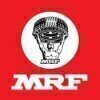Automobile Technician
20+ Automobile Technician Interview Questions and Answers

Asked in MG Motor

Q. What is engine& how many type of engine are used in automobile
An engine is a machine that converts fuel into mechanical energy. There are several types of engines used in automobiles.
An engine is the power source of a vehicle, responsible for generating the necessary energy to propel the vehicle forward.
The most common type of engine used in automobiles is the internal combustion engine, which burns fuel within the engine to produce power.
Internal combustion engines can be further classified into two types: gasoline engines and diesel e...read more

Asked in Automobile Carriers

Q. What is the firing order of a four-piston engine?
The firing order of a four piston engine is the sequence in which the spark plugs ignite the fuel-air mixture in each cylinder.
The firing order is determined by the engine design and is usually specified in the vehicle's service manual.
It is important to follow the correct firing order to ensure proper engine performance and avoid damage.
For a four-cylinder engine, the firing order can vary depending on the engine configuration. Some common firing orders are 1-3-4-2, 1-2-4-3,...read more
Automobile Technician Interview Questions and Answers for Freshers

Asked in MG Motor

Q. What is the engine & what type of engine are in our automobile
The engine is the main power source of an automobile. It can be of various types such as gasoline, diesel, electric, or hybrid.
The engine converts fuel into mechanical energy to power the vehicle.
Gasoline engines use spark plugs to ignite the fuel-air mixture, while diesel engines use compression ignition.
Electric engines use electricity stored in batteries to power the vehicle.
Hybrid engines combine both gasoline/diesel and electric engines for improved fuel efficiency.
Examp...read more

Asked in Automobile Carriers

Q. Explain how you can keep your car in good condition.
Regular maintenance, proper driving habits, and timely repairs can help keep a car in good condition.
Follow the manufacturer's recommended maintenance schedule
Check and change the oil regularly
Inspect and replace air filters
Keep tires properly inflated and aligned
Avoid aggressive driving and excessive idling
Address any issues or warning signs promptly
Store the car in a covered and protected area
Clean both the interior and exterior regularly

Asked in MG Motor

Q. What is the clutch&how many types of gear box us in our automobile
The clutch is a mechanical device that connects and disconnects the engine from the transmission. There are two types of gearboxes: manual and automatic.
The clutch is located between the engine and the transmission.
It allows the driver to engage or disengage the engine power from the transmission.
When the clutch pedal is pressed, the clutch disc is disengaged, allowing the driver to change gears.
Manual gearboxes require the driver to manually shift gears using a clutch pedal ...read more

Asked in Automobile Carriers

Q. How often does a car require servicing?
The frequency of car services depends on various factors such as mileage, age, and maintenance history.
Car manufacturers generally recommend servicing every 6,000 to 10,000 miles or every 6 to 12 months, whichever comes first.
Regular maintenance tasks include oil changes, filter replacements, tire rotations, and fluid checks.
Older cars or those with high mileage may require more frequent servicing to ensure optimal performance and prevent breakdowns.
The service schedule may a...read more
Automobile Technician Jobs




Asked in MG Motor

Q. What is the clutch & what type of gear box available in automobile
Clutch is a mechanical device that engages and disengages power transmission between the engine and gearbox. Gearboxes can be manual or automatic.
Clutch is used to connect and disconnect the engine from the transmission
Manual gearboxes have a clutch pedal that the driver must press to change gears
Automatic gearboxes use a torque converter instead of a clutch
Other types of gearboxes include CVT (continuously variable transmission) and DCT (dual-clutch transmission)

Asked in Automobile Carriers

Q. When was the engine discovered?
The engine was discovered in the late 19th century.
The first practical internal combustion engine was developed by Nikolaus Otto in 1876.
However, the concept of engines dates back to ancient times with the invention of steam engines.
The development of the modern engine involved contributions from various inventors and engineers.
The engine has undergone significant advancements and improvements over the years.
Share interview questions and help millions of jobseekers 🌟


Asked in Sonalika Tractors

Q. How does the engine work?
The engine works by converting fuel into mechanical energy through a series of combustion processes.
The engine operates on the principle of internal combustion, where fuel is ignited inside the engine cylinders.
Fuel and air mixture is drawn into the cylinders through intake valves.
The mixture is compressed by the piston, increasing its temperature and pressure.
A spark plug ignites the compressed mixture, causing a controlled explosion.
The explosion forces the piston down, con...read more

Asked in Honda Motorcycle & Scooter

Q. What are the different types of engines based on their stroke configuration?
Engines can be classified based on stroke configuration into two main types: two-stroke and four-stroke engines.
Two-Stroke Engine: Completes a power cycle in two strokes of the piston (e.g., chainsaws, dirt bikes).
Four-Stroke Engine: Completes a power cycle in four strokes of the piston (e.g., most cars, motorcycles).
Two-Stroke engines are generally lighter and simpler but less fuel-efficient.
Four-Stroke engines are more fuel-efficient and produce lower emissions.

Asked in Mahindra & Mahindra

Q. What is future plan automobile what is replacement disel and petrol
The future of automobiles is shifting towards electric and alternative fuel vehicles, replacing traditional diesel and petrol engines.
Electric Vehicles (EVs) are gaining popularity, with examples like Tesla Model 3 and Nissan Leaf.
Hydrogen Fuel Cell Vehicles (FCVs) such as the Toyota Mirai offer zero-emission alternatives.
Hybrid vehicles combine petrol/diesel engines with electric motors, like the Toyota Prius.
Biofuels derived from organic materials can replace traditional fu...read more

Asked in Honda Motorcycle & Scooter

Q. What are the differences between BS4 and BS6 engines?
BS4 and BS6 engines differ in emission standards, fuel efficiency, and technology, with BS6 being more stringent and advanced.
BS4 engines emit more pollutants compared to BS6 engines, which have stricter emission norms.
BS6 engines use advanced technologies like fuel injection systems and catalytic converters to reduce emissions.
BS6 fuels contain lower sulfur content (10 ppm) compared to BS4 fuels (50 ppm), leading to cleaner combustion.
Examples: Many new vehicles now comply w...read more

Asked in Honda Motorcycle & Scooter

Q. What are the different types of cooling systems available?
Cooling systems in vehicles manage engine temperature, ensuring optimal performance and preventing overheating.
Liquid Cooling: Uses coolant to absorb heat; common in most modern vehicles (e.g., cars, trucks).
Air Cooling: Relies on air flow; often found in motorcycles and some older cars (e.g., VW Beetle).
Oil Cooling: Uses engine oil to dissipate heat; used in high-performance engines (e.g., some sports cars).
Evaporative Cooling: Utilizes evaporation to cool; less common in ve...read more

Asked in Honda Motorcycle & Scooter

Q. What is the full form of the abbreviation "FI"?
FI stands for Fuel Injection, a system that delivers fuel to an engine for combustion, enhancing efficiency and performance.
Fuel Injection replaces carburetors in modern engines for better fuel atomization.
Examples include Port Fuel Injection (PFI) and Direct Fuel Injection (DFI).
FI systems improve fuel efficiency and reduce emissions compared to older systems.

Asked in Honda Motorcycle & Scooter

Q. What is the name of the four-stroke engine?
The four-stroke engine, also known as the Otto cycle engine, operates through four distinct strokes: intake, compression, power, and exhaust.
1. Intake Stroke: Air-fuel mixture enters the cylinder.
2. Compression Stroke: The piston compresses the mixture for ignition.
3. Power Stroke: Ignition occurs, forcing the piston down.
4. Exhaust Stroke: Exhaust gases are expelled from the cylinder.
Example: Most gasoline engines in cars use the four-stroke cycle.

Asked in Tata Motors

Q. How does a multi-stroke engine work?
There are two types of stroke engines: two-stroke and four-stroke.
Two-stroke engines complete a power cycle in two strokes of the piston: compression and combustion/exhaust.
Four-stroke engines complete a power cycle in four strokes of the piston: intake, compression, combustion, and exhaust.
Examples of two-stroke engines include chainsaws and motorcycles, while examples of four-stroke engines include cars and trucks.

Asked in Bobst India

Q. What is the interview date?
The date of the interview is not provided.

Asked in Tech Mahindra

Q. What is your current CTC and expected CTC?
CTC stands for Current Cost to Company and CTV stands for Expected Cost to Company.
CTC refers to the total salary package of an employee, including all benefits and allowances.
It includes the basic salary, incentives, bonuses, and other perks provided by the company.
CTV is the expected salary package that an employee is looking for in a new job.
It is the amount the candidate expects to earn in terms of salary and benefits.
The CTV may vary based on factors like experience, ski...read more

Asked in CARS24

Q. What is the function of an alternator?
The alternator is responsible for generating electrical power in a vehicle.
Converts mechanical energy into electrical energy
Charges the battery
Powers the electrical systems of the vehicle
Supplies electricity to the ignition system
Provides power to the lights, radio, and other electrical components

Asked in Honda Motorcycle & Scooter

Q. What is the full form of BS?
BS stands for Bharat Stage, a set of emission standards for vehicles in India aimed at reducing air pollution.
Bharat Stage standards are similar to European emission standards.
BS-I was introduced in 2000, and the latest is BS-VI, implemented in 2020.
Each stage has stricter limits on pollutants like NOx and particulate matter.
For example, BS-VI vehicles emit significantly lower pollutants compared to BS-IV.
Asked in Caliber Mining And Logistics

Q. What is an automobile?
An automobile is a self-propelled vehicle designed for transporting passengers or goods on roads.
Comprises various components like engine, transmission, and chassis.
Types include cars, trucks, motorcycles, and buses.
Powered by internal combustion engines or electric motors.
Used for personal, commercial, and recreational purposes.
Examples: Sedans (Toyota Camry), SUVs (Ford Explorer), and electric cars (Tesla Model 3).

Asked in Honda Motorcycle & Scooter

Q. What is the cooling system?
The cooling system regulates engine temperature, preventing overheating and ensuring optimal performance.
Consists of components like the radiator, water pump, and thermostat.
The radiator dissipates heat from the coolant to the air.
The water pump circulates coolant through the engine and radiator.
The thermostat regulates coolant flow based on engine temperature.
Examples include liquid cooling systems in cars and air-cooled systems in motorcycles.
Asked in HIMALAYA STEEL MILL SERVICES

Q. How do you perform maintenance?
Regular maintenance includes checking and replacing fluids, inspecting belts and hoses, changing filters, and performing tune-ups.
Check and replace engine oil and filter every 3,000-5,000 miles.
Inspect and replace air filter every 12,000-15,000 miles.
Check and replace spark plugs every 30,000-100,000 miles.
Inspect and replace timing belt every 60,000-100,000 miles.
Check and replace brake fluid every 20,000-45,000 miles.

Asked in Bajaj Auto

Q. What is an engine?
An engine is a machine that converts fuel into mechanical energy to power a vehicle.
An engine is the heart of a vehicle, responsible for generating power.
It converts fuel (such as gasoline or diesel) into mechanical energy.
Engines come in different types, such as gasoline engines, diesel engines, and electric motors.
They typically consist of various components like cylinders, pistons, valves, and a crankshaft.
Examples of engines include V8 engines, inline-four engines, and el...read more

Asked in TCS

Q. What is software testing?
Software testing is the process of evaluating software to ensure it meets specified requirements and is free of defects.
Identifies bugs and issues before software release, e.g., finding a crash in a mobile app.
Ensures software functionality works as intended, e.g., verifying a payment gateway processes transactions correctly.
Validates performance under various conditions, e.g., testing website load times during high traffic.
Checks compatibility across different devices and pl...read more

Asked in Wipro

Q. What is manual testing?
Manual testing is a software testing process where testers execute test cases without automation tools.
Involves human testers executing test cases manually.
Used to identify bugs and ensure software quality.
Testers simulate end-user behavior to validate functionality.
Example: Testing a car's braking system by manually applying brakes.
Useful for exploratory testing where automated scripts may not cover all scenarios.

Asked in Alfa Laval

Q. What are the differences between HMI and SCADA?
HMI stands for Human Machine Interface and is used for operator control of machines, while SCADA stands for Supervisory Control and Data Acquisition and is used for monitoring and controlling processes.
HMI is used for operator control of machines, while SCADA is used for monitoring and controlling processes
HMI typically has a graphical interface for operators to interact with, while SCADA focuses on data acquisition and control
HMI is more focused on local control and feedback...read more
Asked in Taxon Automation India

Q. What are PLC and HMI?
PLC stands for Programmable Logic Controller, used to automate industrial processes. HMI stands for Human Machine Interface, used for interaction with machines.
PLC is a digital computer used for automation of electromechanical processes.
HMI is a user interface that connects an operator to the controller of a machine.
PLC and HMI work together to control and monitor industrial processes.
PLC programming involves writing logic for controlling machinery.
HMI provides a visual repre...read more

Asked in Rohan Motors

Q. How do you diagnose problems?
Diagnosing automobile problems involves systematic checks of components and systems to identify issues affecting performance.
Check for warning lights on the dashboard; for example, a check engine light may indicate an issue with the engine or emissions system.
Listen for unusual noises; a grinding sound when braking could suggest worn brake pads.
Inspect fluid levels; low oil or coolant can lead to engine overheating or damage.
Examine tire condition; uneven wear may indicate al...read more
Interview Questions of Similar Designations
Interview Experiences of Popular Companies








Reviews
Interviews
Salaries
Users

















